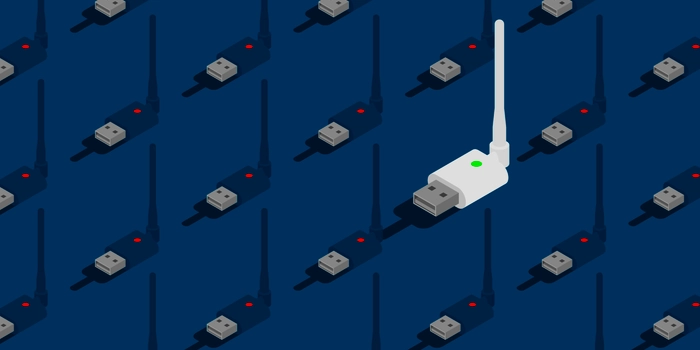Much of the Northeast is known for its frigid temperatures and unexpected heavy snowfall. While ski resorts across the Northeast rejoice, local businesses may not share the same level of excitement. Blizzards can hinder employee productivity and your business continuity strategy by crippling public transport, causing power outages, threatening infrastructure, and trapping people in their homes.
Here's How to Come up With a Business Strategy Before a Blizzard:
Winter Blizzard Predictions
The winter of 2015 is a prime example of the dangers a blizzard can bring. After more than 100 inches of snow, no amount of camaraderie or hard work could disguise the fact that local businesses were being hit hard. With transport restricted and schools closed, even businesses that did not rely on local footfall were feeling the pressure: workers simply couldn't get into work.
This year, with Farmers' Almanac predicting a snowier-than-normal season, businesses across the Northeast could be at risk of losing productivity and revenue. One of the critical questions to ask is how your company can increase organizational resilience in case weather conditions keep business from running as usual.
We’ve Detailed the Top Three Steps That Your Organization Can Take to Protect Against Challenging Conditions This Winter:
1. Make Sure Your Help Desk is Prepared
The success of a business relies heavily on the success of its employees. Your workers are dependent upon their technology and thus, on your business' IT support staff when issues with their technology arise — big or small. In the event of an emergency, your help desk staff should feel comfortable taking charge in getting all systems and employees up and running.
In order for your help desk to be successful, all staff must be effectively trained and prepared in advance of a potential disaster. To get you started, here are the essential characteristics of an efficient help desk:
-
High Availability
- Should a disaster occur, at least one member of your IT team should be on call at all times and easy to contact. Make sure they have set up an alternative, guaranteed method of contact—if your business servers are down, how will employees be able to connect to your IT staff for help?
-
Understand & Educate on Cloud Solutions
- If your team is primarily office-based, most members will need proper training and guidance on how to access their work systems from home utilizing the cloud.
-
Employee Contact List
- Develop an internal contact list with employees' specified emergency contact information, and ensure 24/7 accessibility. It goes without saying that ensuring the safety of your employees through effective communication is essential.
-
Familiarize with Your Business Continuity Plan
- While many businesses rely on third-party providers for disaster recovery, don't just sit back—your IT staff should fully understand the protocol in the face of a disaster, and be able to effectively communicate it to the rest of your business.
It’s not uncommon for a small-to-medium-sized business to not have access to a 24/7 help desk... but it's also unwise. A well-trained, experienced and responsive help desk will be the first line of defense in any event that threatens business continuity. Organizations who outsource their IT support and help desk needs to a Managed IT Services Provider have the peace of mind that the above preparations are proactively taken care of by a team of IT professionals.
2. Enable Remote Operations and Productivity
In many cases, a disaster doesn’t need to physically damage a business’s infrastructure or premises to cause losses. During the blizzards of 2015 in the Northeast, businesses suffered because employees simply weren’t able to get into work. In many cases, travel disruption can ultimately lead to business downtime and lost productivity if employees are not equipped for remote work.
Don't be vulnerable to downtime—provide the infrastructure that allows employees' remote access when they aren't able to make it into the office, for whatever reason. In this day and age, employees should be able to remotely access critical files and/or applications from the cloud and collaborate seamlessly with other employees, all while maintaining your business' high standards of customer service.
The deployment of cloud-based office solutions, such as Office 365, can enable employees to access business-class versions of everyday-use software like Word and Excel, and collaborate from any location, nullifying many of the negative effects of severe travel disruption. Used in conjunction with a cloud storage solution, Office 365 can allow many employees to continue their work unhindered from home or a temporary office.
3. Ensure Foolproof Data Backup & Disaster Recovery
It isn’t just inclement weather and power outages that can threaten your business: fires, flooding, electrical outages, cyber threats, human errors and other disasters can all heavily damage any business, putting your systems and data at risk.
Ensure that a tried-and-true data backup and disaster recovery solution have been put in place for effective, automated, and redundant data backup, making it easy to restore your business systems and files in the aftermath of a disaster. With many businesses often lacking the bandwidth and resources to develop a business continuity solution, businesses are increasingly relying on Managed Services Providers to implement a cost-effective disaster recovery solution.
iCorps Guardian ensures redundant levels of protection from data loss including local backups and recovery through onsite image-based backups to an iCorps Guardian appliance and business continuity through backup and disaster recovery in the cloud. Learn more here.





